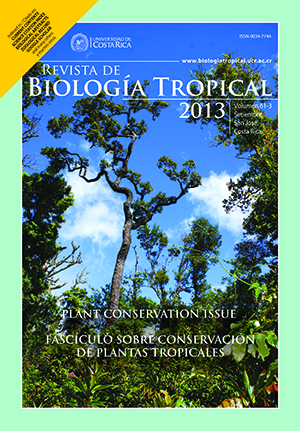Abstract
The survival of plants in epiphytic environments depends on vegetative adaptations capable to defraud different stresses. Based on the structural diversity of the Orchidaceae, the current study has the objective of relating the anatomical structure of Dichaea cogniauxiana and Epidendrum secundum with the distinct environments where they live. It was expected that, despite structural similarities as strategies for resource acquisition, some peculiar variations related to the distinct light microenvironments (inside or in the edge of the nebular forest, near to “campo rupestre” area) might be found. Leaves and roots of both species were collected in a nebular forest located at a “campo rupestre” area at Serra da Piedade, Brazil), in January and February 2005. D. cogniauxiana is adhered to trunks, in sites with high atmospheric humidity and shaded, while E. secundum is located at the edge of the nebular forest, in more luminous sites. The leaves of E. secundum had thicker cuticle and higher number of stomata per area than those of D. cogniauxiana, characteristics coherent with their distinct pattern of exhibition to sun light. The suprastomatic chambers formed by the thicker cuticle may function as a barrier of resistance to water evaporation. The succulence of the leaves of E. secundum propitiates organic acids storage at night, and the storage of starch may be involved in PEP-carboxylase metabolism, both propitiating CAM mechanism. Roots with larger number of cell layers of the velamen, and specialized thick walled cortical cells (both in E. secundum) help water absorption and indicate better adaptation to an environment with intense solar radiation and a probable higher water deficit. The remarkable cell wall thickening of E. secundum exodermis can confer more efficient protection against the excess of transpiration at the border of the nebular forest. On the other hand, besides D. cogniauxiana be epiphyte, it is in a low position - in a shaded environment and with high relative humidity. Its thin thickened velamen permits the entrance of the low available light, and photosynthesis, producing oxygen and helping to avoid hypoxia condition. As features registered for D. cogniauxiana and E. secundum roots, we can depict the velamen, distinct exodermis and endodermis, and specialized thick walled cortical cells as characteristic of epiphytic plants.##plugins.facebook.comentarios##
Downloads
Download data is not yet available.


